Through the heart of the city
Part two.
Moving further east along Nezavisimosti Avenue in the direction and crossing it at a right angle is Yanka Kupala Street. Here is the recently renovated building of the Belarusian State Circus. Construction on the building (V. Zhukov) started October 30, 1954 after the former circus building was burned to the ground during a bombing raid at the start of the war. Completed in 1958, the new circus was officially opened on February 11, 1959. At the time it was the largest and most beautiful Circus in the Soviet Union.Opposite the circus across the avenue is Yanka Kupala Park. Here the beauty of the avenue, with the combination of open spaces and monumental buildings, is quite vivid. In the right corner of the park at the entrance from Nezavisimosti Avenue is a monument to the national poet Yanka Kupala (1882-1942). Nearby is a Fountain complex canlled Venok (wreath, or garland) featuring female sculptures and the work of A. Anikeychik. According to local folklore when he showed the model for the fountain each individual Commission of experts he needed to get approval from forced him to reduce the girls' 'size' as they were simply too 'sexy'. Good news for Anikeychik in the end as when the project was finally completed he was left with several hundred kilos of plasticine. The fountain has become one of the most popular meeting places in the city for young lovers.
Cross the square and moving from the avenue is the also recently renovated Opera House (I. Langbard, 1936). After significant war damage the building was rebuilt in 1948. A local version of the Phantom of the Opera legend says a German soldier stayed in the basement after the occupiers abandoned the city, living on a diet of rats and condensation. His mummified body was allegedly found there during subsequent renovation work. Here the avenue crosses the river Svisloch on a bridge designed by M. Parusnikov and G. Badanov. There are some beautiful views of the river and embankment. On the right of the bridge is the greenery of Gorky Park, the former City Governor's garden. On the left is a story described by a collector of stories about Minsk M. Volodin.
On the riverbank, at the foot of Belarusian Military headquarters building, there’s a stone rotunda. Like many other Stalin-era buildings in the city the rotunda bears the distinctive mark of antiquity. In 1981 Belarusian Communists celebrated the 60th anniversary of the Party. One of the points of the programme of celebrations was the publication of the colourful album with views of the capital. It was only after 50,000 albums were printed on the best imported glossy paper that somebody noticed something was wrong. In one particular photograph of the panorama it was not only possible to make out the fine details of the rotunda, but, also, three people sitting under its arches and clearly sharing a bottle of something. Attempts to airbrush out the bottle resulted in complete disappointment as the picture now showed three persons striking a most unusual pose. Finally, the whole print run was shredded, the Art Director fired and the offending photographer unable to find work. Surviving copies of the book are now considered a real rarity and something of a collectors' item.
Moving up the avenue soon reveals one of the main landmarks in the city, Victory Square, or as it was known before the construction of the monument in 1954 as is stilled occasionally referred to nowadays, Round Square. The surrounding Socialist Realist buildings create a magnificent ensemble, while the main focus and attraction is the Victory Monument in the centre (G. Zaborsky, V. Korol, Z. Azgur, A. Bembel, A. Glebov, S. Selikhanov). The architectural ensemble of the square began to take shape before the war. In 1938 they started construction of two arc-shaped houses, which are crowned now with the huge letters forming the slogan 'The Heroic Dead of the People are Immortal'. Now in its centre is a 38-metre obelisk, topped with the Order of Victory and dedicated to the soldiers and partisans who fell in battle against the Nazis. The opening of the monument took place in 1954 and was dedicated to the 10th anniversary of the liberation of Belarus. The four sides of the obelisk pedestal are decorated with bronze high reliefs, namely May 9, 1945, The Soviet Army during World War II, Partisans of Belarus and Glory to the Fallen Heroes.
Moving further in the direction of the National Library of Belarus, the next square is named in honour of the writer and poet Yakub Kolas (1882-1956) and is located on the site of the historic village of Komarovka after which the nearby Komarovsky Market gets its name. Covering some two hectares of space, the square features apartment buildings dating from 1960 with the Stolichny grocery store, the largest of its kind in the country when it was opened, occupying one of them at ground level. In 1963 the ensemble of buildings neared completion with the opening of the Belarusian State Philharmonic (G. Benedict), and, finally, in 1964, TSUM, the Central Department Store, also the largest department store of its kind in the country at the time.
The monument in the centre of the square featuring Kolas and several heroes from his collected writing dates from 1972 and was commissioned to coincide with the 90th anniversary of his birth. Nearby are a small park and fountains, all the work of Z. Azgur, architects Y. Gradov, G. Zaborsky and L. Levin.
As has already been pointed out, the epic post-war reconstruction of Minsk was the direct consequence of Stalin's vision to build a gateway to his vast and glorious empire, a prelude to all the good things to come 700km to the east in Moscow. But like so many of Stalin's megalomaniacal dreams, things didn't quite go to plan. Instead of acting as an architectural overture, the sheer and overwhelmingly bombastic appearance of the Socialist Realist buildings made Moscow rather tame in comparison. Also, despite Moscow's clutch of awesome Socialist Realist architecture, the city also possessed many other buildings from its past, thus diluting the overall effect. If there was ever a city that represented Stalin's vision of Paradise on Earth, Minsk must surely claim the title.


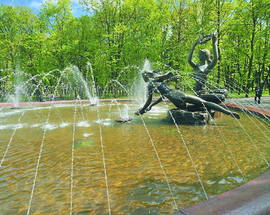
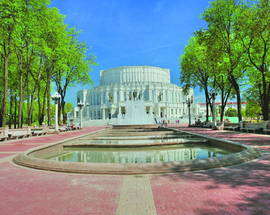
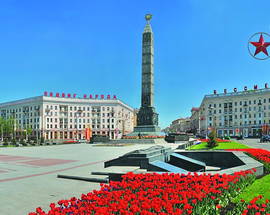
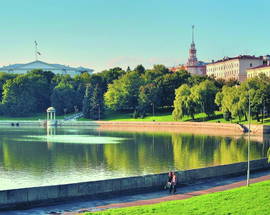
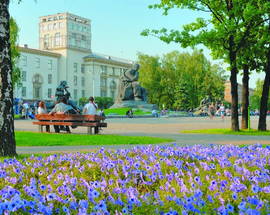
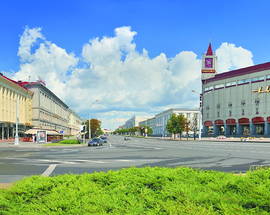
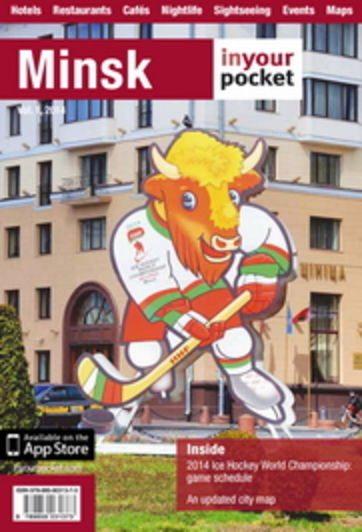
Comments